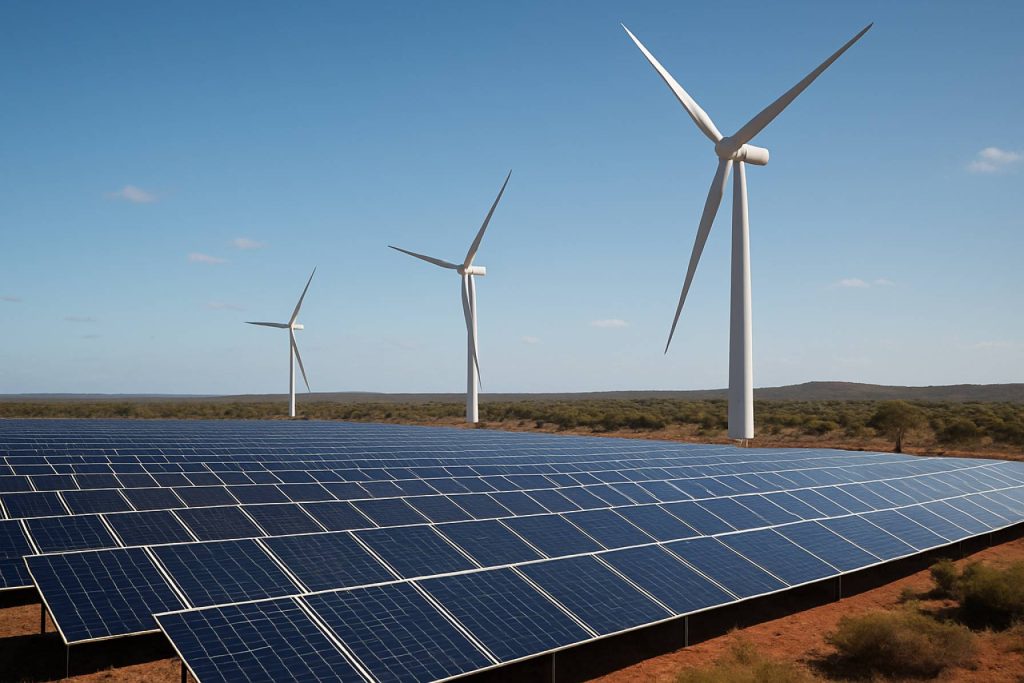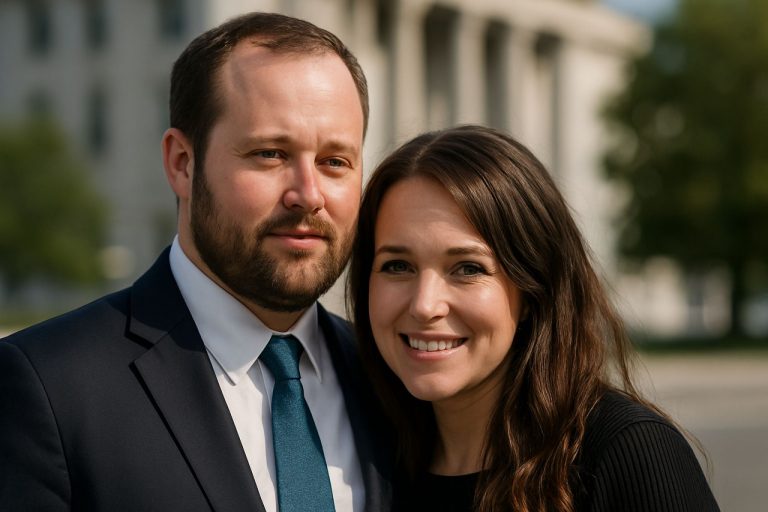
- Western Australia is launching a major renewable energy project, focused on large-scale green ammonia production using wind and solar power at the Oakajee Strategic Industrial Area.
- The initiative—spearheaded by Xodus under Warradarge Energy—will generate up to 800,000 tonnes of green ammonia annually from a combined 1 GW wind and 500 MW solar installation.
- Direct, behind-the-meter renewable electricity enhances reliability and reduces energy costs, making the project globally competitive in green hydrogen production.
- Green ammonia and hydrogen will help decarbonise key sectors like mining and heavy transport, supporting Australia’s drive toward clean energy leadership.
- The project targets both domestic use and export, aiming to leverage international demand for renewable fuels and position Australia as a global green energy exporter.
A bold shift is rippling across Western Australia’s raw, wind-swept Mid West coast. Imagine the sun’s glaring heat pooling atop endless scrubland, while hulking wind turbines spin against a cloudless sky—the future of green industry gathering force just north of Perth.
The state government has taken a decisive step, allocating a critical swath of land to global energy consultant Xodus for a sweeping renewable project under the banner of Warradarge Energy. This initiative—centered at the Oakajee Strategic Industrial Area—envisions not just incremental progress, but a dramatic transformation: the production of up to 800,000 tonnes of green ammonia every year, powered cleanly by a huge 1 gigawatt wind and 500 megawatt solar installation at Warradarge.
The project’s technical backbone is as impressive as its scale. By drawing electricity directly from co-located wind and solar arrays, it promises a rare combination of reliability and low cost—a vital edge in the competitive global race for green hydrogen. This “behind-the-meter” model ensures robust energy supply, shielding the project from grid volatility and market price swings.
But the real story begins with what this means for Australia itself. The hydrogen and ammonia generated here will first flow into the sinews of the nation’s mining and heavy transport industries—gas-guzzling sectors under increasing pressure to decarbonise. Ammonia, with its high energy density and ease of transport, is fast emerging as a linchpin in the world’s transition to cleaner fuels. Such a project will help Western Australia burnish its credentials as a leader in renewable energy, slashing carbon footprints in the process.
Ambitions, though, don’t stop at domestic borders. With global appetite for green ammonia and hydrogen surging—from Asia to Europe—the developers intend to scale output for lucrative export markets. If successful, Oakajee could amplify Australia’s voice on the international stage, signalling a new epoch where its sun and wind power not just homes or mines, but fuel ships and industries halfway around the world.
This move illustrates a growing determination—both political and industrial—to turn Western Australia’s natural gifts into enduring economic and environmental advantage. The takeaway: as the world pivots sharply toward decarbonisation, major projects like Oakajee’s green hydrogen hub aren’t just experiments. They are the blueprint for the next great wave of sustainable development, reshaping energy, exports, and the future itself.
Green Ammonia Gold Rush: Western Australia’s Renewable Megaproject Set to Disrupt the Global Energy Market
Overview: Warradarge Energy’s Ambitious Leap Forward
The allocation of land in Western Australia’s Mid West to Xodus and its Warradarge Energy project signals more than just another step in clean energy—it marks a seismic shift for global green fuel production. Beyond what was covered in the source, here’s a deep-dive into the project’s technical, economic, and global relevance—plus expert predictions, key facts, actionable insights, and a fair appraisal of pressing questions.
—
Additional Facts & Expert Insights
1. Global Context: Demand for Green Ammonia and Hydrogen
– Green ammonia is gaining traction not only as a fertiliser feedstock but as a clean fuel for shipping and power generation. The International Energy Agency (IEA) forecasts that demand for low-emission hydrogen and ammonia could increase over 10-fold by 2050.
– Key export markets include Japan, South Korea, and Germany, all with aggressive hydrogen import targets as part of climate strategies (source: IEA, Hydrogen Council).
2. Australia’s Role on the World Stage
– Australia already leads the world in solar adoption and renewable resource potential. Projects like Oakajee are part of a broader national push, following similar megaprojects in Queensland and the Northern Territory.
– The country is targeting a AUD $50 billion green hydrogen export industry by 2050 (Australian Government, National Hydrogen Strategy).
3. How Green Ammonia Production Works (Step-by-Step)
How-To: Simplified Stages
1. Renewable Power Generation: Wind and solar arrays generate electricity.
2. Electrolysis: Green electricity splits water into hydrogen and oxygen.
3. Ammonia Synthesis: Green hydrogen combines with nitrogen (from air) via the Haber-Bosch process, powered by renewables, to form ammonia.
4. Storage & Distribution: Ammonia—easier to store and transport than hydrogen—is shipped to domestic users and export terminals.
4. Real-World Use Cases
– Heavy Industry: Enables steelmakers and mining operators to switch from diesel to green ammonia as a cleaner energy source.
– Maritime Shipping: International Maritime Organization (IMO) regulations are ramping up pressure on shipowners to cut sulfur and CO2 emissions, boosting demand for zero-carbon fuels like ammonia.
5. Market Forecasts & Industry Trends
– By 2030, the global green ammonia market could reach USD $17 billion, with Australia poised to be a top-three exporter (source: Grand View Research).
– Over 100 global green ammonia projects are in various stages, but few have “behind-the-meter” scale, giving Oakajee a competitive cost advantage.
6. Technical Features & Specs
– Wind Power: 1 GW capacity—enough to power 700,000+ Australian homes.
– Solar Power: 500 MW—supporting continuous ammonia production during daylight hours.
– Production: Up to 800,000 tonnes/year of green ammonia, equating to roughly 150,000 tonnes of green hydrogen.
7. Reviews & Comparisons
Compared to global peers (Neom in Saudi Arabia, H2U Eyre Peninsula in South Australia):
– Warradarge is unique for its direct grid-independence, reducing transmission losses and grid fees.
– Western Australia’s political support and proximity to Asian markets present a distinctive export edge.
8. Potential Controversies & Limitations
– Environmental Impact: Large-scale land use and visual impact of turbines can raise local concerns.
– Water Use: Electrolysis is water-intensive; Western Australia’s arid climate necessitates careful sourcing or desalination.
– Technology Risk: Electrolyser technology must scale and maintain reliability to compete with fossil-based ammonia.
9. Security & Sustainability
– “Behind-the-meter” design insulates operations from energy price shocks.
– The project incorporates cutting-edge monitoring and adaptive management for minimal wildlife disruption, though continued independent oversight is urged.
10. Pricing & Investment
– Early industry estimates place green ammonia’s cost at $700-900/tonne, but rapid cost falls are expected as electrolyser and renewable tech scales.
– Government support includes land allocation and, potentially, future tax credits or offtake guarantees.
—
Most Pressing Reader Questions—Answered
Q: Why is green ammonia better than hydrogen for export?
A: Ammonia is easier and cheaper to store and ship, as it liquefies at higher temperatures and is already globally traded, unlike pure hydrogen.
Q: What are the risks for Western Australia?
A: The main risks are water scarcity, community acceptance, and ensuring projects meet strict environmental standards (CSIRO, Clean Energy Council).
Q: Who will benefit most from the project?
A: Local miners, heavy industry, shipping operators, and regional economies (via new jobs and infrastructure) gain the most direct benefits.
Q: Could the global market collapse or become oversupplied?
A: Given strong climate mandates and nascent demand, the IEA sees robust growth through 2040, but price drops are likely as more projects come online.
—
Actionable Recommendations & Quick Tips
– Businesses in mining or logistics: Begin feasibility studies for cleaner fleet or equipment conversions now.
– Job Seekers: Watch for upcoming recruitment in engineering, renewables, and project management.
– Policy Makers: Prioritize water stewardship and Indigenous consultations to secure social license.
– Consumers: Support Australian-made green products to accelerate the clean energy transition.
—
Final Thoughts
Western Australia’s Oakajee green ammonia hub could redefine the regional economy and help the world decarbonise heavy industries. For stakeholders, proactive adaptation—through workforce training, business partnerships, or policy engagement—will pay off as the global green fuels market accelerates.
For more on Western Australia’s renewable energy strategy, see the official site: [wa.gov.au](https://wa.gov.au)
—
Additional Keywords:
green ammonia, Western Australia, renewable energy, hydrogen export, wind power, solar, zero-carbon fuel, Oakajee, decarbonization, industrial transition



